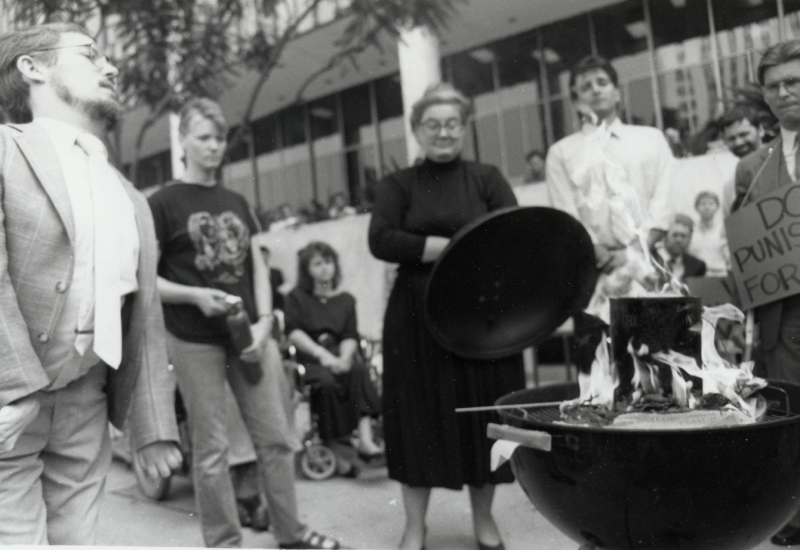By: Cathy Kudlick

Monday, August 9 2010 - It’s hard to believe that it’s been ten years since we lost the friend, mentor, scholar-activist provocateur for whom the Longmore Institute was named. Paul would have turned 74 on July 10. The author of The Invention of George Washington would probably have found a way to wrangle a ticket or two or three to “Hamilton” on its first night at San Francisco’s Orpheum Theater in 2017. He’d have applauded the multiracial twist on American history and would have wondered within earshot of many why Gouverneur Morris (the man with significant disabilities responsible for “We the People” preamble in the US Constitution) didn’t have a central role and even romantic lead. To the line “Revolution is messy but now is the time to stand,” he would have cheered louder than the rest, then quipped: “standing can be messy too.”
The author of Why I Burned My Book and Other Essays on Disability would have much to say about the present world. He’d have read multiple papers cover to cover, though most would be online because he’d have replaced his big newspaper-reading table and page-turning contraption with dozens of news apps he’d check in with on a daily basis. On Facebook he’d fume about the lack of leadership in Washington and would have penned and phoned scores of messages to politicians about the need for affordable healthcare—especially in the age of COVID-19, equal distribution of medical equipment, and how important it is to include the disabled perspective in every conversation about resources, medical rationing, workplace protections, and the meaning of life. He’d also rail against the magical thinking and denialism of those in Washington and in some state legislatures that have created and exacerbated the coronavirus spread and blocked its proper management.
The author of Telethons: Spectacle, Disability, and the Business of Charity would caution against quick fixes led by the private sector and the decades-long defunding of the public health sector. He’d also worry that in this age of renewed scarcity and economic retrenchment the charity model would become the central way for Americans to find medical and economic relief. He’d zero in on failure and greed within the nursing home industry, the push to limit resources, be they physical such as crowded conditions or personnel who are under-trained and under-paid. He’d also urge people with disabilities to keep pushing for better representations in the media that would forever erase images of pity and helplessness, instead emphasizing our creativity and productive challenges to the status quo so we’re seen as indispensable rather than disposable. For example, he’d point out that the resourcefulness of people with disabilities remains a coveted strategy amongst the non-disabled in this moment. To launch the next thirty years of the Americans with Disabilities Act (ADA), he’d cue people with disabilities to learn everything they could about the late Civil Rights Activist, Congressman John Lewis, particularly his invitation to make “good trouble.”
We desperately need the incisive analyses of Paul Longmore at this moment, his understanding of the past, the present, and the future and his advocacy of social justice. So our charge is clear: keep our collective fires burning for generations to come.